As the debate over the impact of international students continues, the number of myths being repeated continues to grow, particularly on social media.
So, rather than getting bogged down with directly addressing various narratives or making commentary on the various issues, today, the data will be doing all the talking.
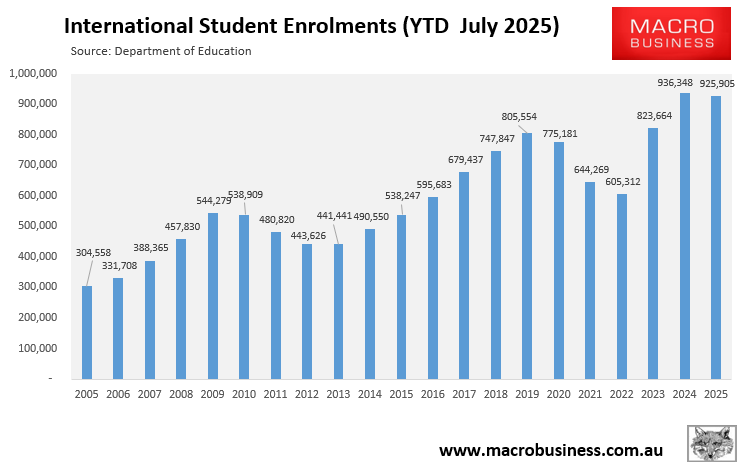
International Students and Housing
Back in July, the Reserve Bank of Australia (RBA) released a report on the impact of international students on the housing market and the economy.
The report concluded that international students had the following living arrangements when it came to housing:
- ~50% rent in the private rental market
- ~24% reported living with family and friends (which potentially has a degree of overlap with sharehouses in the private rental market)
- 15% live in student accommodation
- 3% live in a homestay arrangement
- 2% live in other accommodation
“As a back-of-the-envelope exercise, if we assume that 50% of international students rent, an additional 100,000 students would increase private rental demand by 50,000 individuals”, The RBA wrote.
The RBA went on to state that their modeling found that an increase in the population of 50,000 would raise rents in the private rental market by 0.5%.
Yet despite concluding that the effect of a large increase in the number of renters would have a relatively mild impact, the RBA then went on to take a significantly different tack:
“The marginal effect of an additional renter may be greater in periods where the rental market is tight and vacancy rates are low, such as occurred post-pandemic”.
Given that rental vacancy rates are currently tracking near an all-time low, according to Cotality, then the impact of international students on the private rental market would be significantly greater.
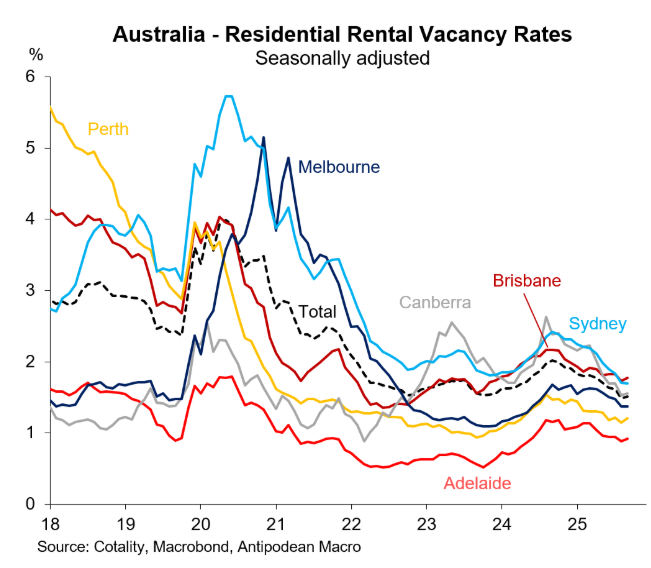
Time In The Country
The issue of how long international students stay in Australia once initially granted a visa has also long been an issue of debate.
But with data from the federal government’s Centre For Population, we have arguably the most detailed source material from which to draw a data-driven conclusion.
The 2023 report conducted a case study on the 103,000 international students who arrived in Australia between 2006 and 2007.
The report then followed their migration status over the next decade, seeing how many left Australia permanently, how many remained on a temporary visa, and how many became permanent residents (of some description).
- 39% ended up remaining in Australia as permanent residents (32% through the permanent skilled stream and 7% via the permanent family stream).
- 17% remained in Australia on some form of temporary visa
- 44% had left Australia by the 10-year mark
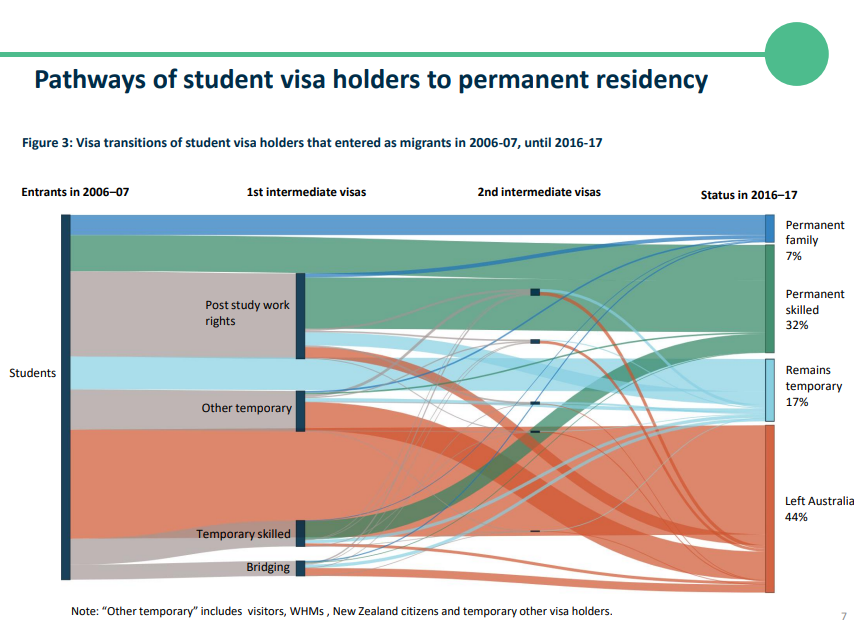
In a similar vein, Jobs & Skills Australia’s (JSA) latest study on the international education sector revealed that about half the overseas students who attended Australian universities in the early 2010s are permanent residents:
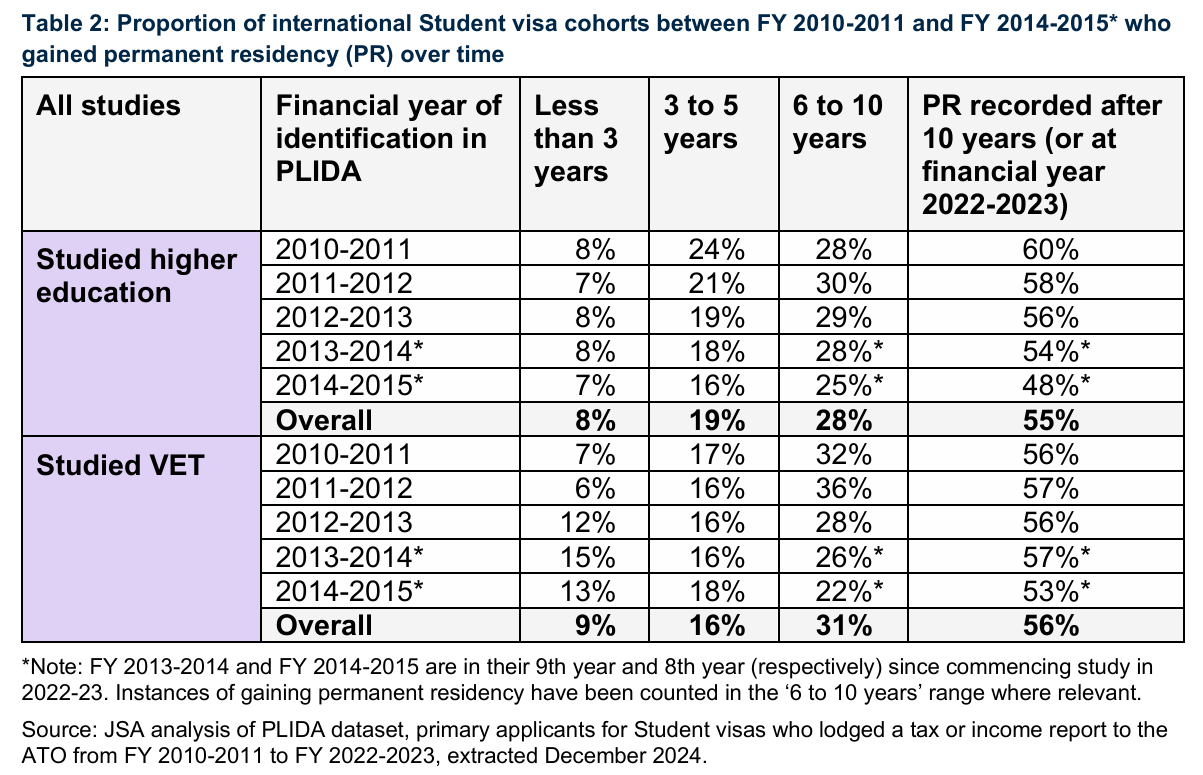
Looking at the numbers as an individual looking to make Australia one’s permanent home, better than 50/50 odds at staying in the country on a long-term basis is likely a pretty attractive pathway to pursue.
JSA also reported that nearly 70% of international higher education students reported migration as a reason for choosing to study in Australia.
“For many students, migration aspirations are a primary goal”, JSA says. “The purpose underlying the choices of many students was to seek permanent residence in Australia”.
“Longer-term analysis shows that more graduates are staying than previously estimated. As noted above, many international students remain in Australia as graduates for significant periods following their study and seek permanent residency”, JSA wrote.
What is clear is that long-term and permanent residency pathways are a major part of the appeal for many of the international students coming to Australia.
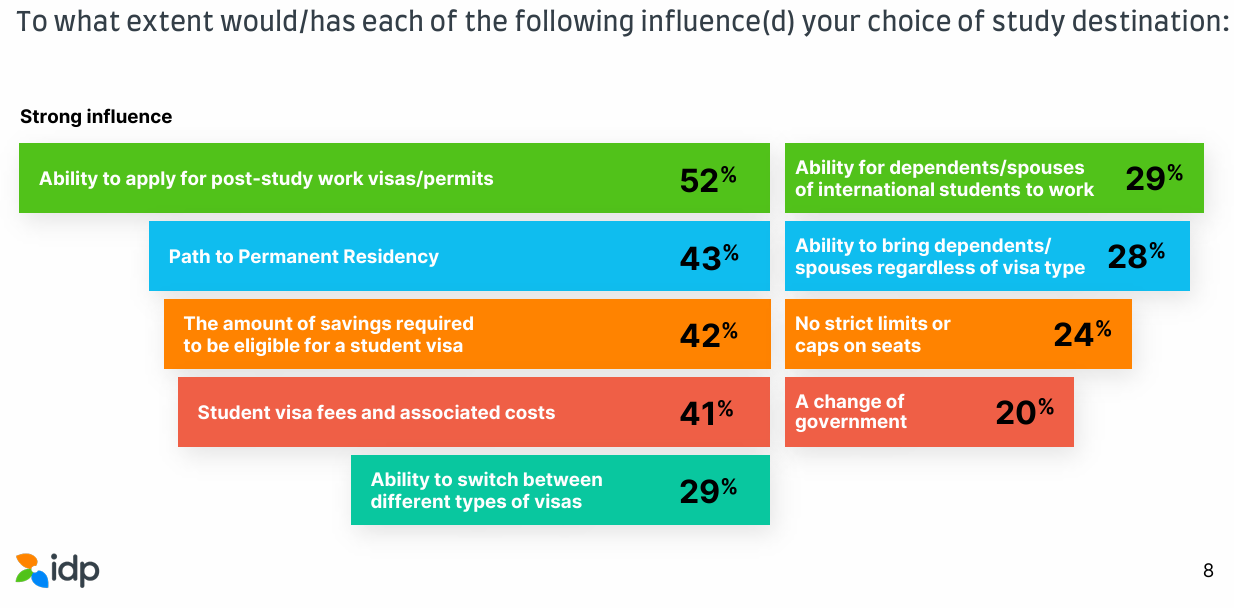
Given the education sector’s importance to the economy as a driver of headline GDP, as revealed earlier in the year by the RBA, the current status quo appears set to continue.
Despite increasing concerns regarding the availability of adequate housing and the provision of essential services, the Albanese government has committed to a larger intake of international students in 2026 compared to this year.

